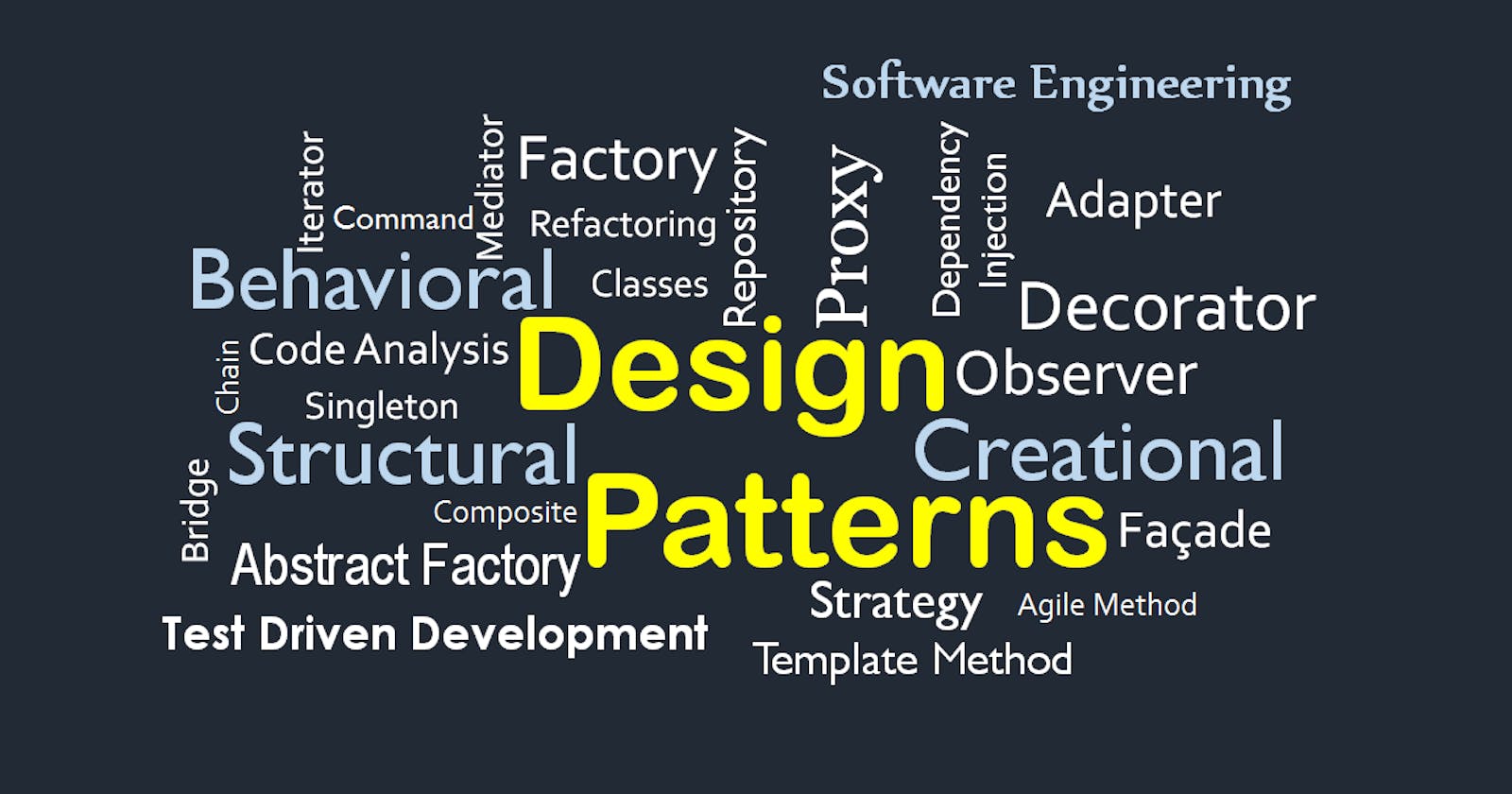Design Patterns in Software Development: A Comprehensive Introduction - Part 0
Design patterns are essential tools in software development, offering solutions to recurring problems in design. They were initially introduced by the Gang of Four (GoF) in their book "Design Patterns: Elements of Reusable Object-Oriented Software" in 1994. Since then, design patterns have played a crucial role in helping programmers write better, reusable, and maintainable code. In this blog post, we will explore different types of design patterns used in programming languages, including creational, structural, and behavioral patterns.

Creational Design Patterns
Creational design patterns focus on object creation and offer various mechanisms to accomplish this task. Each mechanism has its own set of advantages and disadvantages. These patterns are widely used to handle object creation in a flexible and decoupled manner, promoting code reuse throughout the application.
One commonly used creational design pattern is the Singleton pattern. It ensures that a class has only one instance, providing a global point of access to it. The Singleton pattern is useful in scenarios where a single instance of a class is required throughout the application.
Another important creational design pattern is the Factory pattern. It enables the creation of objects without specifying their exact class type. This pattern is useful when you need to create objects dynamically, based on certain conditions or configurations, without knowing the specific class at runtime.
Structural Design Patterns
Structural design patterns focus on the structure of classes and objects, enabling developers to organize relationships between them effectively. These patterns help in forming larger structures while maintaining flexibility and adaptability.
One commonly used structural design pattern is the Adapter pattern. It allows the adaptation of one interface of a class to another interface that clients expect. This pattern is particularly useful when a class's interface is incompatible with the one required by the client. The Adapter pattern acts as a bridge between the client and the class, making them work seamlessly together.
Another important structural design pattern is the Decorator pattern. It dynamically attaches additional responsibilities to an object. This pattern is useful when you want to add behavior or state to an object at runtime without affecting the behavior of other objects. The Decorator pattern provides a flexible way to enhance object functionality by wrapping it with additional layers of behavior.
Behavioral Design Patterns
Behavioral design patterns focus on defining communication patterns between objects and how they interact to perform tasks. These patterns promote loose coupling and flexibility in object communication.
One commonly used behavioral design pattern is the Observer pattern. It keeps multiple objects in sync with each other. When one object's state changes, all its dependencies are notified and updated accordingly. The Observer pattern facilitates a publish-subscribe mechanism, where objects can subscribe to and receive updates from a subject.
Another important behavioral design pattern is the Command pattern. It encapsulates requests as objects, allowing them to be passed as arguments to functions, stored, or passed to other objects. This pattern is useful when you want to encapsulate a request and its parameters in a single object, providing flexibility in handling and executing commands.
Conclusion
Design patterns are proven solutions to common software design problems, offering techniques for creating flexible, maintainable, and extensible code. By understanding and applying design patterns in your code, you can achieve modularity, maintainability, and code that is easy to comprehend.
It's important to note that the types of design patterns discussed in this blog post provide a high-level overview of their respective categories. Each category, such as creational, structural, and behavioral patterns, encompasses several subtypes and variations. In future blog posts, we will delve deeper into each design pattern type, exploring their subtypes like factory, adapter, and more, and how they can be effectively applied in real-world scenarios.
By exploring the specific subtypes of design patterns, you will gain a more comprehensive understanding of their implementations, advantages, and use cases. Stay tuned for upcoming blogs where we will dive into the details of each pattern subtype, providing you with practical insights and examples to enhance your software development skills.
Thank you so much for reading📖😊....
Happy Coding😊😁...
